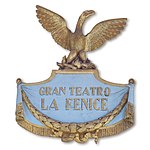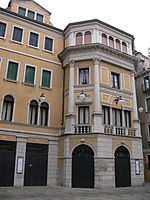Ateneo Veneto

The Ateneo Veneto di Scienze, Lettere ed Arti is an institution for the promulgation of science, literature, art and culture in all forms, in the exclusive interest of promoting social solidarity, located in Venice, northern Italy. The Ateneo Veneto is made up of 300 members resident in the city and in the province of Venice, elected by the Assembly, which is also responsible for appointing the Chairman and the Academic Council. Honorary, Non-Resident and Foreign Members, elected by the Assembly also participate in the life of the Ateneo. The Ateneo Veneto was formed on 12 January 1812 through the merger of the Società Veneta di Medicina, the Accademia dei Filareti, and the Accademia Veneta Letteraria pursuant to a decree of Napoleon I dated 25 December 1810. The first chairman was Leopoldo Cicognara. It was the Ateneo Veneto that saw the first stirrings of Venetian liberalism, with speeches by Daniele Manin, who was President of the short-lived Republic of San Marco from 1848 to 1849, and by Niccolò Tommaseo. Throughout the 19th and 20th centuries the Ateneo Veneto acted as a forum for debates on crucial matters for the city in the fields of culture, science, art, literature, medicine, politics, economics and law. Such free discussions on major issues have continued to characterize the Ateneo Veneto, testifying to its civic, social and cultural commitment.
Excerpt from the Wikipedia article Ateneo Veneto (License: CC BY-SA 3.0, Authors, Images).Ateneo Veneto
Campo San Fantin, Mestre Venezia-Murano-Burano
Geographical coordinates (GPS) Address Website External links Nearby Places Show on map
Geographical coordinates (GPS)
| Latitude | Longitude |
|---|---|
| N 45.434039 ° | E 12.333993 ° |
Address
Scuola Grande di San Fantin (Ateneo Veneto)
Campo San Fantin
30170 Mestre, Venezia-Murano-Burano
Veneto, Italy
Open on Google Maps











